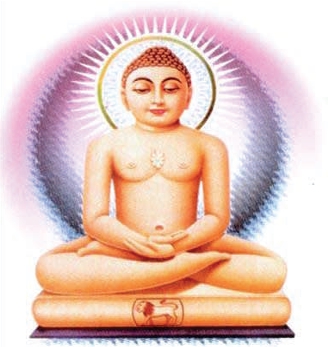
Jainism in Mediaeval Period received much importance and was patronised by rulers of different dynasties. During this period Jain doctrine, scriptures, construction of Jain temples and installation of Jain images received much importance.
Jainism in mediaeval India flourished to a great extent. The emperors of the Delhi Sultanate, Mughal Dynasty and the Rajput Clans patronised Jain religion. During the mediaeval period the society was divided into Hindu and Jain religion. However, Islam too brought in new life-values and life-styles in Indian society. During this period century old Digambara Sect and Swetambara Sect was further sub divided into different branches. They were also divided into ganas, gachchas, anvayas and sanghas. Bhattaraka, Chaityavasi, Taranpanth, Sthanakvasi practices also came into prominence. Thus, Jainism in medieval India witnessed a wide extension. Jain scriptures, treatises, memoirs, panegyrics, and mostly dated inscriptions on the images and walls of the temples also received importance. Many Jain scholars received great respect, honour at the hands of different rulers. They also occupied high positions in their courts. The Jain society believing in the doctrine of aparigraha (non-accumulation) remained firm to their faith all through their long journey.
Jainism in Delhi Sultanate
The rulers of Delhi were of Turk origin and followed Islam religion. They remained intolerant towards the followers of Jainism and Hinduism. However, many rulers also helped in the growth of Jainism. Rulers like Muhammad Ghori, Ala-ud-din Khilji, Qutb-ud-din Mubarak Shah, Ghiyasuddin Tughlaq, Muhammad Bin Tughlaq and others proved to be tolerant rulers and respected and honoured many Jain scholars. Many Jain saints, scholars received honour from their hands. Some of the saints were Acharya Basantkirti, Thakkur Pandit, Prabhachandra, Shrutviraswami, Swetambar Suri Jinachandra, and Yati Ramachandra, Thakkur Pheru, Bhattaraka Durlabhsena, Bhattaraka Prabhachandra, Ratnashekhar Suri, Rekha Pandit and many others.
Jainism in Medieval Gujarat
Gujarat has been an important centre of Jainism. Many sects and gachchas continued to prosper in this belt. Jain religion progressed during this period. Many religious sites, temples, images were established. Many Jain scriptures were also written. Sultans of Gujarat discouraged the Hindus and the Jains, and attempted to demolish their religious places. With the aid of influential shreshthis construction and reconstruction of temples continued. The acharyas and suris also contributed for the growth of Jainism. Jinaprabha Suri`s `Vividha Tirtha Kalpa`, Kakkasuri`s Nabhinandanodhara Prabandha`, `Kharatara Gachcha Brihad Guruavali`, Vidyatilaksuri`s `Kanyanvaya Mahavira Kalpa Parishesha`, Pratishthasoma`s `Soma Soubhagya Kavya` etc. are the literary sources of this period.
During this period, the Swetambaras also held sway in Gujarat. The Lad-Vagada and Nandi sanghas of the Digambara Sect were also important during this time. Branches of these sanghas were set up in Surat, Sojitra, Braoch, Idar, etc. Muslim rulers also gave permission for carrying out sangha-yatras and pilgrimages. Jainism also made a remarkable progress in Malwa during the period of the Sultans.
Jainism in Rajput States
Jainism in Mediaeval Period received much importance and was patronised by rulers of different dynasties. During this period Jain doctrine, scriptures, construction of Jain temples and installation of Jain images received much importance.
Many Rajput states were set up in north and west India during the Sultanate and the Mughal period. The Chahman`s reign in Chandrawad remained in existence in the 13th and the 14th century. Chandrapaldas, its founder took possession of the territory. Most of these rulers were of Jain confession. The posts of minister, general and city-Seth were reserved for Jain families. The Somadeva Vasadhan was builder of Jain temples. They helped in the installation of Jain images and construction of temples. Lokshman, Shivdev etc. were the famous Jain poets of this time. The Chahmana state of Karhal also followed Jainism.
Jainism in Mughal Period
The Mughal rulers like Babar (1526-30), Humayun (1530-40), Sher Shah Suri (1540-55), Akbar (1556-1605), Jahangir (1605-27), Shah Jahan (1627-58) proved to be tolerant towards Jainism. They helped in building many Jain temples and installed many Jain images. They also revered and honoured many Jain scholars like Mahachandra, Digambara Sadhu Sadhprasad, Seth Neminath, Shrichandra Manikchandra, Devacharya, Shreyakirti, Muni Padmasunder, Bhattarak Harivijay Suri, Vijaysen Gani, Jinadas pande, Vidya Harsh Suri, Pandit Banarsidas, Karmachandra Bachchawat, Jinasimha Suri, Pandit Banarsidas and others. Jainism also flourished considerably in Bihar during the Mughal Rule.
Jainism in South India
Jainism had a prominent place in South India, especially in Karnataka. Jainism prospered in South India under the rule of Kalinga king Kharvela. He supported Jainism and helped it flourish in South India through Andhra and the coastal ranges of Tamil Nadu. Many feudal states of that were connected with Vijaynagar Empire were very tolerant towards Jainism and helped to popularise it in different parts of the country. Many ministers, generals, and official members of this dynasty adopted Jainism and followed it strictly. Later the rulers of the Tuluva dynasty and Andavidu Dynasty also contributed for the growth of Jainism.